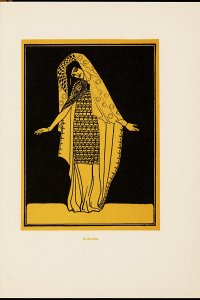Dolorine et les ombres
Year: 1911
Author: Jean de Bosschère (1878 - 1953)
Artist: Jean de Bosschère (1878 - 1953)
Publisher: Bibliothèque de l'Occident
Typography
Thanks to the fact that the writer and artist are the same person, the illustrations to the story match the text perfectly - there is even a textual quote below most drawings. The deliberateness of De Bosschère's methods is also evident from the long preface in which he elaborates on the interplay of words and images. But the unity that emanates from the book is also due to the book's publisher and printer. Inspired by William Morris and his famous Kelmscott Press, De Bosschère and printer Paul Buschmann strove for a perfect external form for the book, which was published by the Bibliothèque de L'Occident. This publisher was specialised in exceptional works and was related to the magazine L'Occident - which Gide considered a precursor of the Nouvelle Revue Française. The publisher strove for a harmony of text and illustrations, and also published sober typographical works such as Cinq grandes odes (1910) by Paul Claudel. The publisher's special attention to paper and typography suited the fashion of the 'Book Beautiful', which the Kelmscott Press had popularised. The absence of advertising in the book also matched this, although the publisher did not pass up the opportunity to promote some of De Bosschère's other books. The editions of these beautiful publications were usually no larger than 300 copies; the costs were often paid by the authors themselves. Famous writers who had their work published by L'Occident, which was founded by André Mithouard and Albert Chapon, included for instance André Gide, Maurice Barrès and Francis Jammes.
The printer wasno stranger to the (Belgian) circle of bibliophiles; the work was printed by the Antwerp-based printer J.-E. Buschmann, the 'house printer' of the Antwerp Société des bibliophiles. By 1911 the printing business was being led by his son Paul, who also took care of the typesetting: the story's dark atmosphere is heightened by the use of the uncial letter in which the text was set. The Antwerp-based artist René Leclercq (1880-1944) provided Dolorine et les ombres with a portrait of Jean de Bosschère. The copy in the Koopman Collection is number 237 of the 250 copies printed on English paper. An ochre-coloured marble pattern was used for the binding. On the binding, as in the book, De Bosschère’s name is still spelled 'De Bosschère', following his name’s official spelling. From 1944 onwards, the artist/author however spelled his name with one 's', and later critics of art and literature have copied this spelling.
Bibliographical description
Description: Dolorine et les ombres / Jean de Bosschère ; avec un portr. par René Leclercq, - Paris : Bibliothèque de l'Occident, 1911. - [213] p. : ill., 26 cm
Printer: Buschmann, Paul
Edition: 300 copies
This copy: Number 237 of 250 on Anglais
Bookbinder: M. Spaans (Koninklijke Bibliotheek)
Bibliography: Bénézit 2-597
Shelfmark: Koopm A 871
References
- Christian Berg, Jean de Boschère ou le mouvement de l’attente: étude biographique et critique. Bruxelles, Palais des académies, 1978
- G.-Jos. Buschmann, Une officine anversoise. Anvers, Buschmann, 1924
- Monique Mol, Jean de Boschere ou le chemin du retour. New York, Lang, 1987
- Wolfgang Sachsenröder, Adrien Mithouard und seine theorie des "occident": Zum Traditionalismus in der französischen Literatur vor dem ersten Weltkrieg. Bonn, Romanisches Seminar der Universität, 1973
- Jean Warmoes, Jean de Boschère: le centenaire de sa naissance. Bruxelles, Archives et Musée de la Litterature, 1978
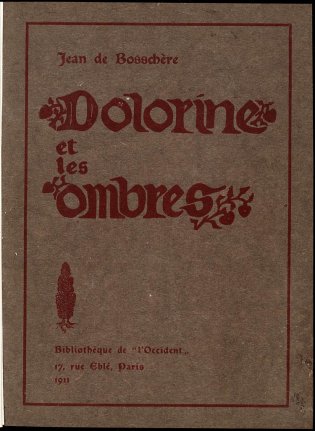
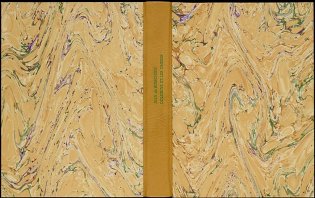
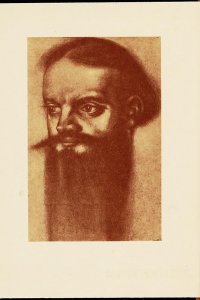
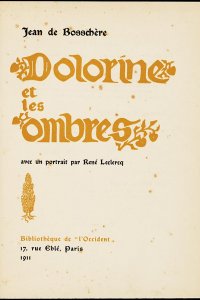
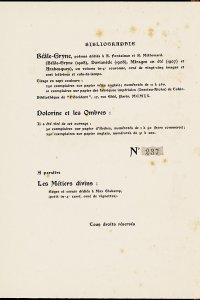
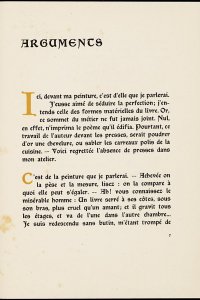
![Dolorine et les ombres, pagina 86-[87] met illustratie door Jean de Bosschère](/sites/default/files/styles/galerie/public/images/dolorine-et-les-ombres-p86-87.jpg?h=dd4d9ff6&itok=FAMevFdS)
